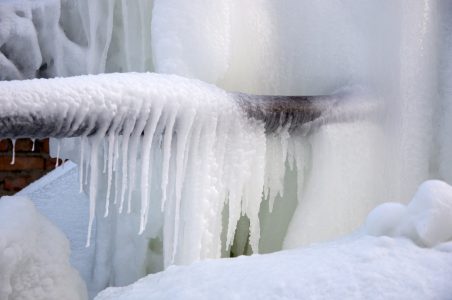They are making several good pointers on How to prepare your home plumbing for winter weather overall in this great article which follows.

Winter can wreak havoc on your plumbing, especially by freezing pipelines. Below's how to prevent it from taking place and what to do if it does.
Introduction
As temperatures drop, the risk of icy pipelines boosts, possibly leading to pricey repair work and water damage. Recognizing exactly how to prevent frozen pipes is vital for homeowners in chilly climates.
Prevention Tips
Shielding prone pipelines
Wrap pipes in insulation sleeves or utilize warmth tape to safeguard them from freezing temperatures. Focus on pipes in unheated or exterior areas of the home.
Home heating methods
Keep indoor areas adequately warmed, particularly areas with pipes. Open closet doors to permit cozy air to circulate around pipes under sinks.
How to identify frozen pipelines
Search for lowered water circulation from taps, unusual odors or sounds from pipelines, and visible frost on subjected pipelines.
Long-Term Solutions
Structural modifications
Consider rerouting pipelines away from outside wall surfaces or unheated areas. Add extra insulation to attics, cellars, and crawl spaces.
Upgrading insulation
Invest in high-grade insulation for pipelines, attics, and walls. Proper insulation helps keep regular temperature levels and decreases the risk of frozen pipes.
Securing Outdoor Plumbing
Garden hose pipes and exterior faucets
Detach and drain garden hose pipes prior to winter season. Set up frost-proof spigots or cover outside faucets with insulated caps.
Recognizing Icy Pipelines
What causes pipes to ice up?
Pipes ice up when revealed to temperatures below 32 ° F (0 ° C) for extended periods. As water inside the pipelines freezes, it expands, taxing the pipeline walls and potentially triggering them to break.
Dangers and problems
Frozen pipelines can result in water disturbances, residential or commercial property damages, and expensive repairs. Ruptured pipes can flooding homes and cause extensive structural damage.
Indications of Frozen Piping
Identifying frozen pipelines early can stop them from breaking.
What to Do If Your Pipes Freeze
Immediate actions to take
If you suspect frozen pipes, maintain faucets available to relieve pressure as the ice melts. Use a hairdryer or towels taken in hot water to thaw pipelines slowly.
Conclusion
Preventing frozen pipelines requires positive steps and quick responses. By comprehending the reasons, indicators, and preventive measures, property owners can shield their pipes throughout cold weather.
5 Ways to Prevent Frozen Pipes
Drain Outdoor Faucets and Disconnect Hoses
First, close the shut-off valve that controls the flow of water in the pipe to your outdoor faucet. Then, head outside to disconnect and drain your hose and open the outdoor faucet to allow the water to completely drain out of the line. Turn off the faucet when done. Finally, head back to the shut-off valve and drain the remaining water inside the pipe into a bucket or container. Additionally, if you have a home irrigation system, you should consider hiring an expert to clear the system of water each year.
Insulate Pipes
One of the best and most cost-effective methods for preventing frozen water pipes is to wrap your pipes with insulation. This is especially important for areas in your home that aren’t exposed to heat, such as an attic. We suggest using foam sleeves, which can typically be found at your local hardware store.
Keep Heat Running at 65
Your pipes are located inside your walls, and the temperature there is much colder than the rest of the house. To prevent your pipes from freezing, The Insurance Information Institute suggests that you keep your home heated to at least 65 degrees, even when traveling. You may want to invest in smart devices that can keep an eye on the temperature in your home while you’re away.
Leave Water Dripping
Moving water — even a small trickle — can prevent ice from forming inside your pipes. When freezing temps are imminent, start a drip of water from all faucets that serve exposed pipes. Leaving a few faucets running will also help relieve pressure inside the pipes and help prevent a rupture if the water inside freezes.
Open Cupboard Doors
Warm your kitchen and bathroom pipes by opening cupboards and vanities. You should also leave your interior doors ajar to help warm air circulate evenly throughout your home.

As a keen reader on Winter Plumbing Precautions: Preventing Frozen Pipes, I figured sharing that piece of content was a good thing. Sharing is caring. You won't know, you may be helping someone out. Thank you so much for taking the time to read it.
Book Today!